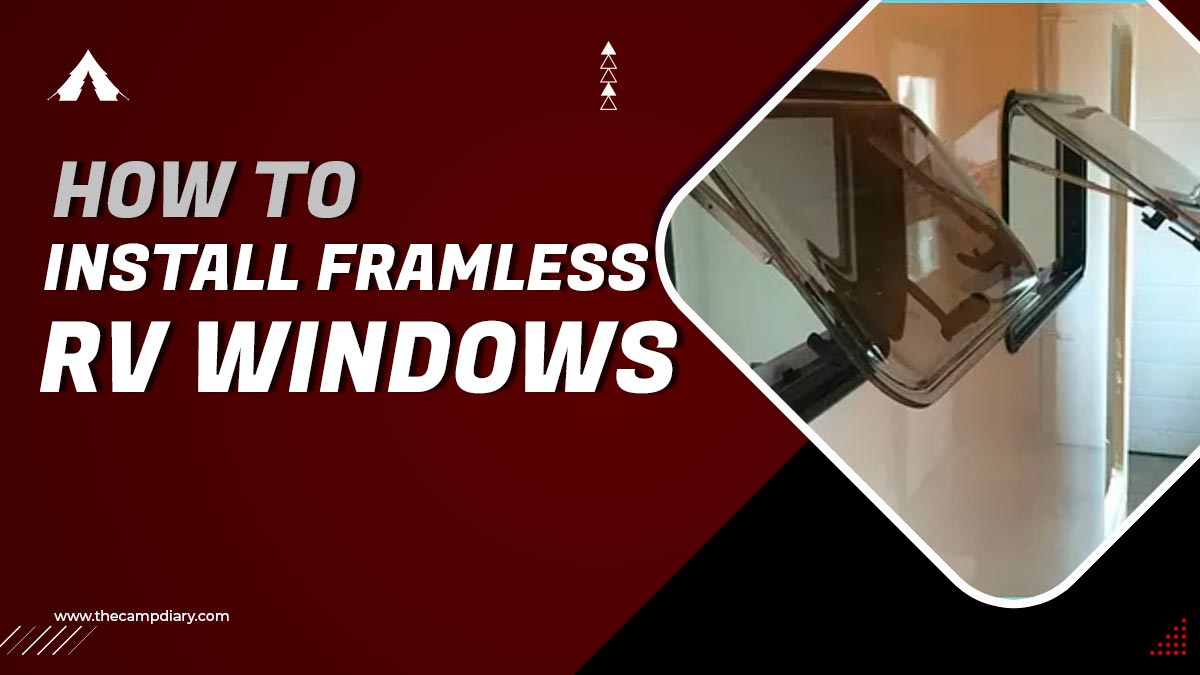How to install frameless RV windows? If you are curious about this, read on for the answer! This is a project that you can do yourself with a few simple tools and supplies. It’s a great way to save money and add** some extra insulation to your rig**. Follow these steps and you’ll be ready to go in no time!
When it comes time to replace your RV’s windows, there are a few different choices you can make. You can go with the traditional framed window, which is the most common option and has been around for years.
Or you could choose a frameless window, which is newer to the market but growing in popularity. Here we’ll take a look at what sets frameless windows apart from their framed counterparts and how to install them in your RV.
How to install frameless RV window
What You Will Need?
- RV window
- Pilot hole drill bit
- Window installation kit
- Ladder
- level
- Tape measure
- Plywood
- Circular saw
- Hammer and nails or screw gun
- Caulk gun
- Silicone sealant
- Screws or nails
Step 1: Measure the Window
The first step is to measure the window you will be replacing. Make sure to take into account the size of the frame, as well as the thickness of the glass. If you intend to install a window in your RV, you will also need to measure the opening where the window will go in your RV.
Step 2: Cut the Plywood
Next, you’ll need to cut a piece of plywood to fit the size of the window opening. Use a circular saw to do this. If your RV doesn’t have an existing window, you can measure and cut the plywood to fit the entire opening.
Step 3: Drill the Pilot Hole
Using a pilot hole drill bit, drill a hole in the center of the plywood that is slightly smaller than the diameter of your installation kit’s screws or nails.
Step 4: Assemble the Window Installation Kit
Follow the instructions that come with your window installation kit to put it together. In this package, you will receive a frame, screws or nails, and weather stripping to complete the project.
Step 5: Install the Window
Carefully insert the frame of the window installation kit into the opening in the plywood. Ensure that it is level and that it is properly secured in place with screws or nails so that it does not move around.
Step 6: Apply Silicone Sealant
Using a caulking gun, apply a thick layer of silicone sealant around the edge of the window frame. So, you will be able to create a watertight seal and keep moisture out of your home by doing this.
Step 7: Secure the Window in Place
Nail or screw the window frame to the plywood, making sure it is securely fastened.
Now that you’ve installed your new frameless RV window, you’ll enjoy years of trouble-free use! Be sure to check the sealant every few months and reseal as needed to keep your rig watertight.
Second method
- Remove the old window.
- Measure the opening and cut a piece of plywood to fit.
- Drill a pilot hole in the center of the plywood.
- Assemble the window installation kit according to the instructions.
- Install the window frame into the opening in the plywood.
- Apply silicone sealant around the edge of the window frame.
- Secure the window frame to the plywood with screws or nails.
- Reinstall the window trim.
- Caulk around the edges of the new window.
- Enjoy your new frameless RV window!
As you can see, installing a frameless RV window is a pretty simple process that most people can do themselves. If you’re looking to add some extra insulation and upgrade the look of your rig, a frameless window is a great option!
Tips and Tricks for RV Window Replacement
- Be sure to use a level when installing the window frame. As a result, you will be able to ensure that it is installed properly and that it looks neat and tidy.
- If you’re having trouble getting the window frame to stay in place, you can use a little bit of construction adhesive to help hold it in place.
- Make sure to check the sealant every few months and reseal as needed to keep your rig watertight.
Final words
Installing a frameless RV window can be a daunting task, but with the right tools and instructions it can be done relatively easily. We’ve walked you through all of the steps necessary to complete this project, so now it’s up to you to get started.
Don’t forget to let us know how it goes in the comment section or by emailing us pictures of your finished product. We would love to see them!
Frequently Asked Questions
How do you seal a frameless RV window?
You can seal a frameless RV window with silicone sealant. Apply a thick layer of silicone sealant around the edge of the window frame to create a watertight seal.
How do you install a frameless RV window?
To install a frameless RV window, you will first need to remove the old window. Next, measure the opening and cut a piece of plywood to fit.
Drill a pilot hole in the center of the plywood. Assemble the window installation kit according to the instructions. Install the window frame into the opening in the plywood.
Apply silicone sealant around the edge of the window frame. Secure the window frame to the plywood with screws or nails. Reinstall the window trim.
Caulk around the edges of the new window. Check the sealant every few months and reseal as needed to keep your rig watertight.
Do frameless RV windows leak?
Frameless RV windows do not typically leak, but it is important to check the sealant every few months and reseal as needed to keep your rig watertight.
Where are the weep holes in the RV window?
Weep holes are located at the bottom of a window frame. They allow water to escape and help prevent the formation of moisture stains.
How do I remove a frameless window?
To remove a frameless window, you will need to remove the window trim and then unscrew or unclip the window frame from the plywood. Carefully pull the window frame out of the opening. Be sure to handle the window frame carefully, as it may be fragile.
What is a frameless window in an RV?
A frameless window in an RV is a window without a frame. It is installed directly into the opening in the plywood. This type of window is typically more insulated and has a cleaner look than a window with a frame.


![How Big Should A Tent Footprint Be? [2023 Guide]](/uploads/how-big-should-a-tent-footprint-be.jpg)
![How Much Wind Can A Tent Withstand [2023 Guide]](/uploads/how-much-wind-can-a-tent-withstand.jpg)
![How To Wash A Tent In A Washing Machine [2023 Guide]](/uploads/how-to-wash-a-tent-in-a-washing-machine.jpg)

![How to Stake a Tent - 15 Easy Ways [2023]](/uploads/how-to-stake-a-tent.jpg)
![How To Check Ammonia Level In RV Fridge [2023 Guide]](/uploads/how-to-check-ammonia-level-in-rv-fridge.jpg)